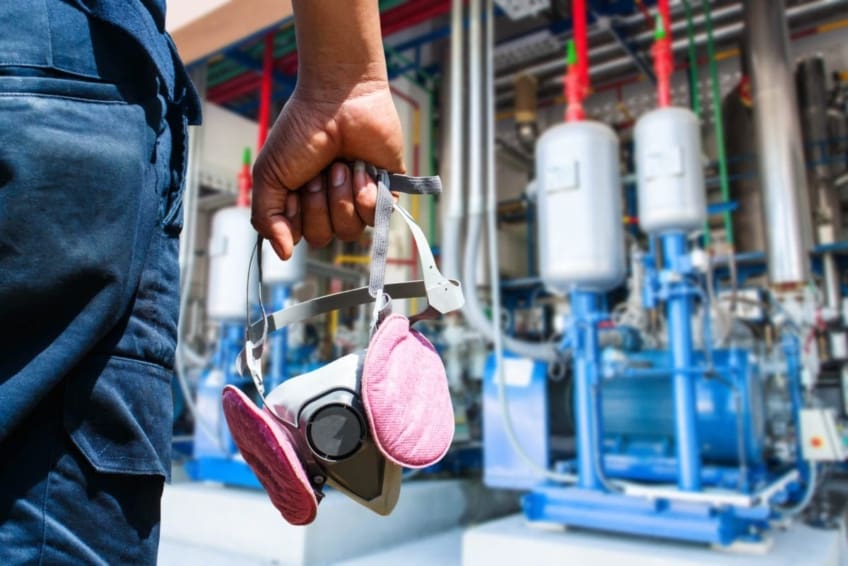
What is occupational respiratory disease?
Occupational respiratory disease is any lung condition you get at work. It occurs because of repeated exposure to certain toxins. You can even get a disease long after being exposed to those toxins.
Certain workplaces lend themselves to disease. The most common are coalmines and factories or areas with high amounts of toxins. These include asbestos and silica dust, as well as smoke, fumes, gases, and other particles.
Types of occupational respiratory disease include:
- Coal workers’ pneumoconiosis, also known as Black Lung Disease.
- Asbestosis.
- Silicosis.
- Farmers’ lung, also known as allergic alveolitis.
It also includes forms of asthma, bronchitis, or emphysema.
Symptoms of occupational respiratory disease
The symptoms of occupational respiratory disease vary. They depend on your work setting, type of disease, and state of health. Smoking can worsen your symptoms.
Symptoms can be similar to those of a cold, the flu, or allergies, such as:
- dry, scratchy, or sore throat
- runny nose
- cough
- fever
- tight chest
- chest pain
- muscle or body aches
- breathing problems, such as shortness of breath or abnormal breathing
Contact your doctor if symptoms persist and seem to occur at work. It may help to keep a log of your symptoms.
What causes occupational respiratory disease?
Many substances found in the workplace can cause disease. This occurs when the toxins irritate the lining in your lungs. Common causes include:
- Dustfrom things such as wood, cotton, coal, asbestos, silica, and talc. Pesticides, drug or enzyme powders, and fiberglass also can hurt your lungs. Even cereal grains, coffee particles, and food flavorings used to make microwave popcorn can cause damage.
- Fumesfrom metals that are heated and cooled quickly. This process results in fine, solid particles being carried in the air. Job examples include welding, smelting, furnace work, pottery making, plastics manufacturing, and rubber operations.
- Smokefrom burning materials. Smoke can contain a variety of particles, gases, and vapors. Firefighters are at an increased risk.
- Gasessuch as formaldehyde, ammonia, chlorine, sulfur dioxide, and nitrogen oxides. These are found at jobs with high heat operations, such as welding, brazing, smelting, oven drying, and furnace work. You also are at risk if you work in a lab using chemicals.
- Vaporsare a form of gas given off by all liquids. Vapors usually irritate your nose and throat before they affect the lungs.
- Mists or spraysfrom paints, lacquers (such as varnish), hair spray, pesticides, cleaning products, acids, oils, and solvents (such as turpentine).
How is occupational respiratory disease diagnosed?
Talk to your doctor if you think you have occupational respiratory disease. They will review your symptoms and ask questions, such as:
- When did your symptoms first appear?
- How often do you have symptoms?
- What time of day are your symptoms worse?
- What type of materials do you come into contact with at work?
- Do you feel worse when you’re at work?
Your doctor also will ask about your work setting and exposure. It may help to have the following information.
- A record of symptoms, including the day, time, and duration.
- A list of previous jobs, hobbies, and smoking habits, if any.
- Completed occupational health history forms.
- A list of precautions and measures in your workplace.
- Your employer’s material safety data sheets (MSDSs). These are information sheets about the products used in your workplace. All employers are required by law to complete and provide these forms.
Tests can diagnose occupational respiratory disease. Your doctor may order a breathing test to listen to your lungs and see how they perform. A chest X-ray or CT scan can detect masses, fluid, or inflammation in your lungs. Your doctor may do in-depth testing to determine the type of disease and severity. This can include a bronchoscopy, biopsy, or surgery.
Can occupational respiratory disease be prevented or avoided?
Depending on your line of work, you might not be able to avoid occupational respiratory disease. You can try to limit exposure to reduce your risk of disease. Things you can do are:
- Stop smoking.
- Wear a mask.
- Increase ventilation in work area.
- Use a respirator. This is a device that covers your nose and mouth. It cleans the air before it enters your body. You should clean the respirator after each use.
- Know and follow workplace safety precautions and first-aid processes.
Workplaces should have programs in place to monitor and limit exposure.
Occupational respiratory disease treatment
There is no cure for occupational respiratory disease. Treatment can help reduce symptoms and prevent further damage. It also can help improve your quality of life. Treatment types vary and can include use of medicines, inhalers, and/or oxygen. Severe conditions may require a lung transplant.
Living with occupational respiratory disease
Talk to your employer if you are diagnosed. They may need to create new measures to reduce or remove your exposure. A change in elements, machines, or work processes can lessen toxins in the air. You may have to change jobs altogether.
If your case is mild, you should be able to lead a normal life. Your doctor can help you manage your condition. They will talk to you about routine testing and vaccines, such as the flu shot. You should avoid smoking and secondhand smoke. Try to maintain a healthy weight. If you have trouble breathing when you exercise, you may need pulmonary rehabilitation.
Occupational respiratory disease can lead to lung cancer and other diseases. People exposed to asbestos are at risk of mesothelioma. People exposed to silica dust are at risk of tuberculosis.
Questions to ask your doctor
- What should I do if I think something at work is making me sick?
- Will occupational respiratory disease affect my life expectancy?
![]()
Copyright © American Academy of Family Physicians
This information provides a general overview and may not apply to everyone. Talk to your family doctor to find out if this information applies to you and to get more information on this subject.













